A simple HF up converter with LimeSDR

In times like these when we are all stuck in our homes, most of us are becoming active on the radio. The best ideas come out when we are challenged and right now we are all challenged mentally, thinking what to do during the indefinite lock down. Anyway, today I will demonstrate how to build a simple up-converter with LimeSDR Mini. This same method will work if you have any other transmit capable SDR.
The basic frequency converter
The commercially available HF up-converters have a nice little filter in them that filters out FM band. Nonetheless, you can still do without a filter at a risk of having FM signals contaminate the spectrum a bit. That can be avoided if you choose your LO by trying different frequencies.
The mixer multiplies the RF signal with the LO and produces sum and difference products. In my case the frequency range of interest lies between \(7MHz\) and \(21MHz\). As a result, the mixer will produce frequency components around the LO in the following manner. Note, that the LO frequency is set at \(450MHz\).
\(Sum\,frequency\,range = 450MHz + 7MHz\,and\, 450MHz+ 21MHz\) \(Difference\,frequency\,range = 450MHz – 7MHz\,and\, 450MHz- 21MHz\)In other words, the sum frequencies are between \(457MHz\,and\,471MHz\) and vice versa for the difference frequencies.
The LO signal needs to be sufficiently strong in case of a passive mixer that I plan on using. LimeSDR produces about 10dBm transmit signal sufficient to drive the mixer.
There is another point to note in the block diagram, that is the LNA. The LNA stands for Low noise amplifier. Why do we need an LNA? To answer that, we need to look at the Frii’s formula. It states that the noise figure of the first stage of the receiver significantly affects the noise figure of the entire system. In simpler words, if the noise figure of first stage is low, the over all noise figure of the receiver system also remains low. Since, the noise figure of a mixer is very high, it can reduce the sensitivity of our receiver.
\(NF_{total} = NF_1 + \frac{NF_2 -1}{G_1}+\frac{NF_3-1}{G_1\times{G_2}}…\)The real calculations
We went through some theory up there. Now, it’s time to apply that on practical components. I will be using the Minicircuits ZFL-500HLN in the first stage that has a gain of \(20dB\). Although, the datasheet states the start frequency as \(10MHz\), the S-parameter file tells me that the amplifier is good down to \(1MHz\). The amplifier offers a noise figure of \(3.8dB\) which isn’t as low as it should be. Nonetheless, it’s better than feeding the signal directly to a mixer.
For the mixer, I have Minicircuits TUF-3LH having a conversion loss of approximately \(5dB\). In case of mixers, the noise figure is roughly equivalent to the conversion loss. Let us, put this information into the Frii’s formula and see what \(NF_{total}\) we get. The noise figure values need to be converted into linear scale before we put them into the Frii’s formula.
\(NF_{linear} = 10^{\frac{NF_{dB}}{10}}\) \(NF_{total} = 2.3988+\frac{3.16-1}{100} = 2.42\)Converting it into dB scale, \(NF_{total} = 10log_{10}(2.42) = 3.83dB\)
Had we fed our signal straight into the mixer, our noise figure would be >5dB.
NOTE: People are going to complain that I did not take into consideration the NF of the receiving port of the SDR. Yes I didn’t for two reasons. First, it is not going to significantly affect the number. Second, I couldn’t find the required data.
The implementation
The implementation was quite simple and hardly needs any explanation except for the software part.
There are two ways you can power this up. One way being through GNURadio and the other involves using SDR Angel. I tried both but from user friendliness point of view, SDR Angel will put you on track quickly.
Before you begin, download SDR Angel from github.
Let us add a transmit sink into the SDR Angel. Go to DeviceSets > Add sink device set.
In the sampling devices control, click on the finger icon and select your LimeSDR. Also set the Local Oscillator frequency (LO) as shown below.
After this, select NBFM Modulator and click on the “+” icon. This will add a narrow band FM modulator on the right pane. We don’t have to do anything because we simply need a fixed 450MHz signal. Click on the purple “Play” button at the left of frequency setting. This will start the transmitter and generate LO. To set the LO power level, we need to set the TX Gain as shown below. Additionally, we also need to select the “Hi” transmit path.
On the receiver side of the settings, the 7MHz band is now shifted by an offset of 450MHz. Correspondingly, you will find the 7MHz band at 457MHz and so on. Do the settings for the receiver identical to whats shown below.
Once you are done, you should be able to receive HF signals with your LimeSDR Mini.
A few screenshots where you can see how good it works.
If you wish to purchase the LNA and the mixer components, here are my suggestions:


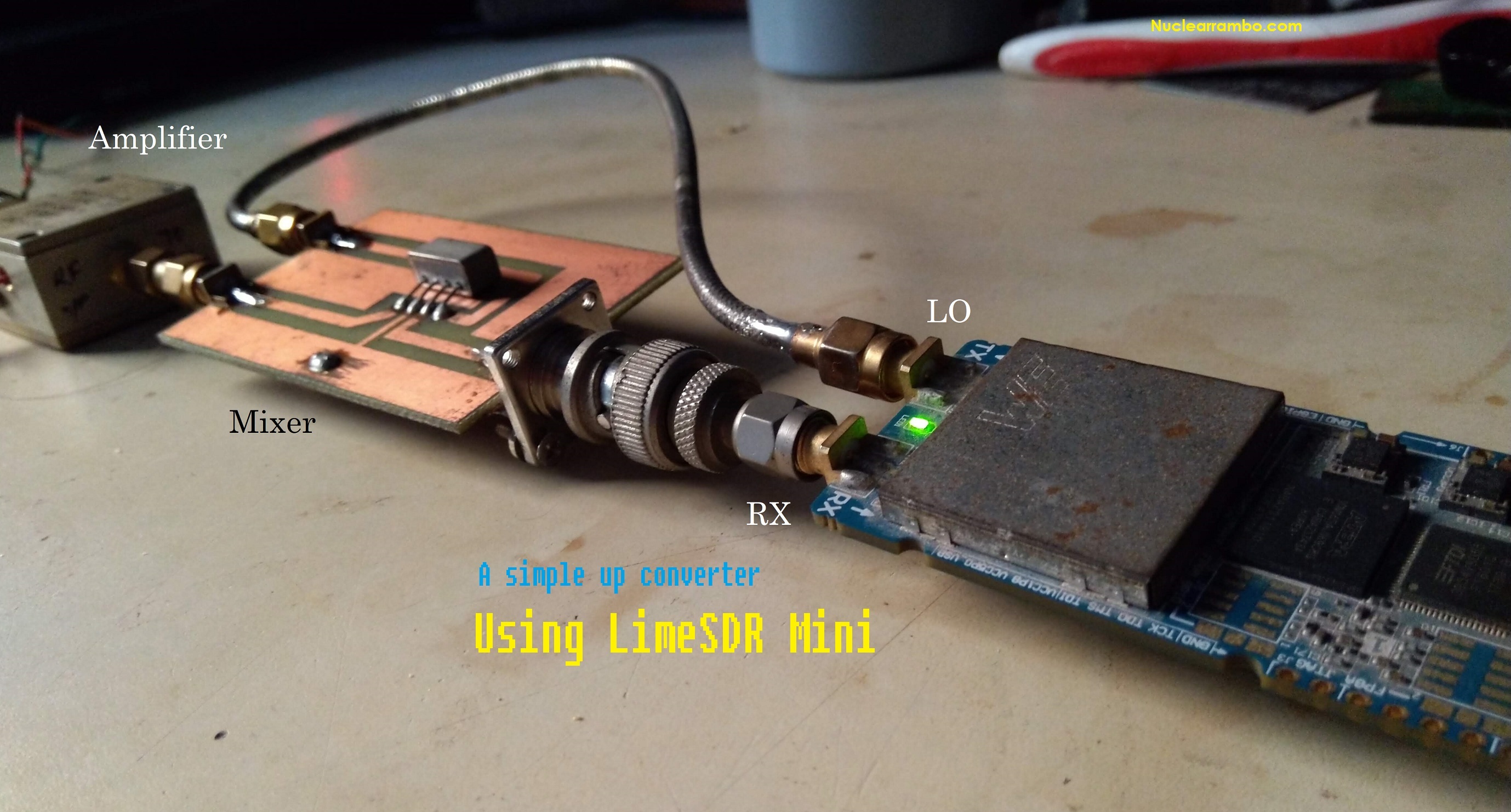
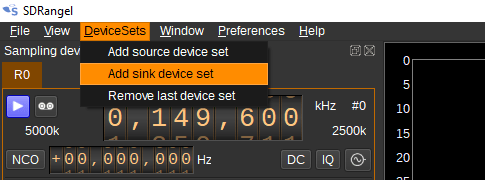
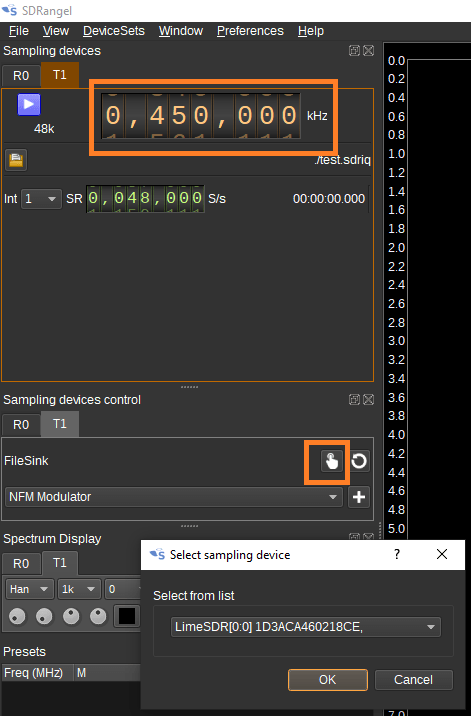
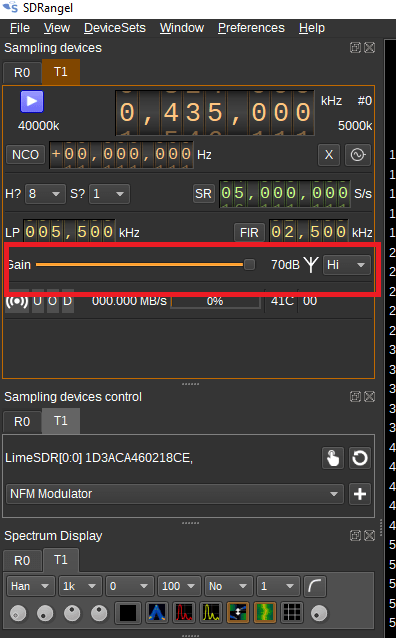
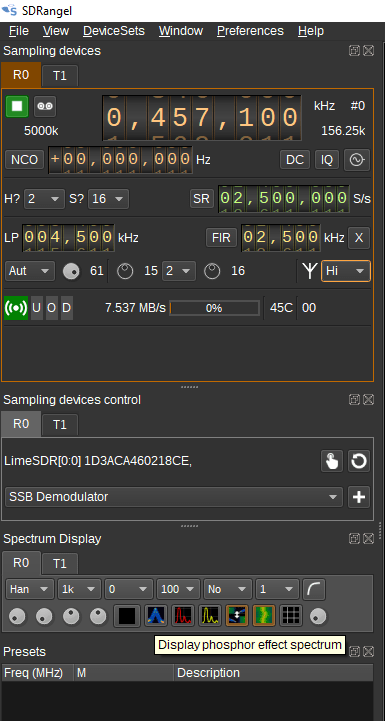
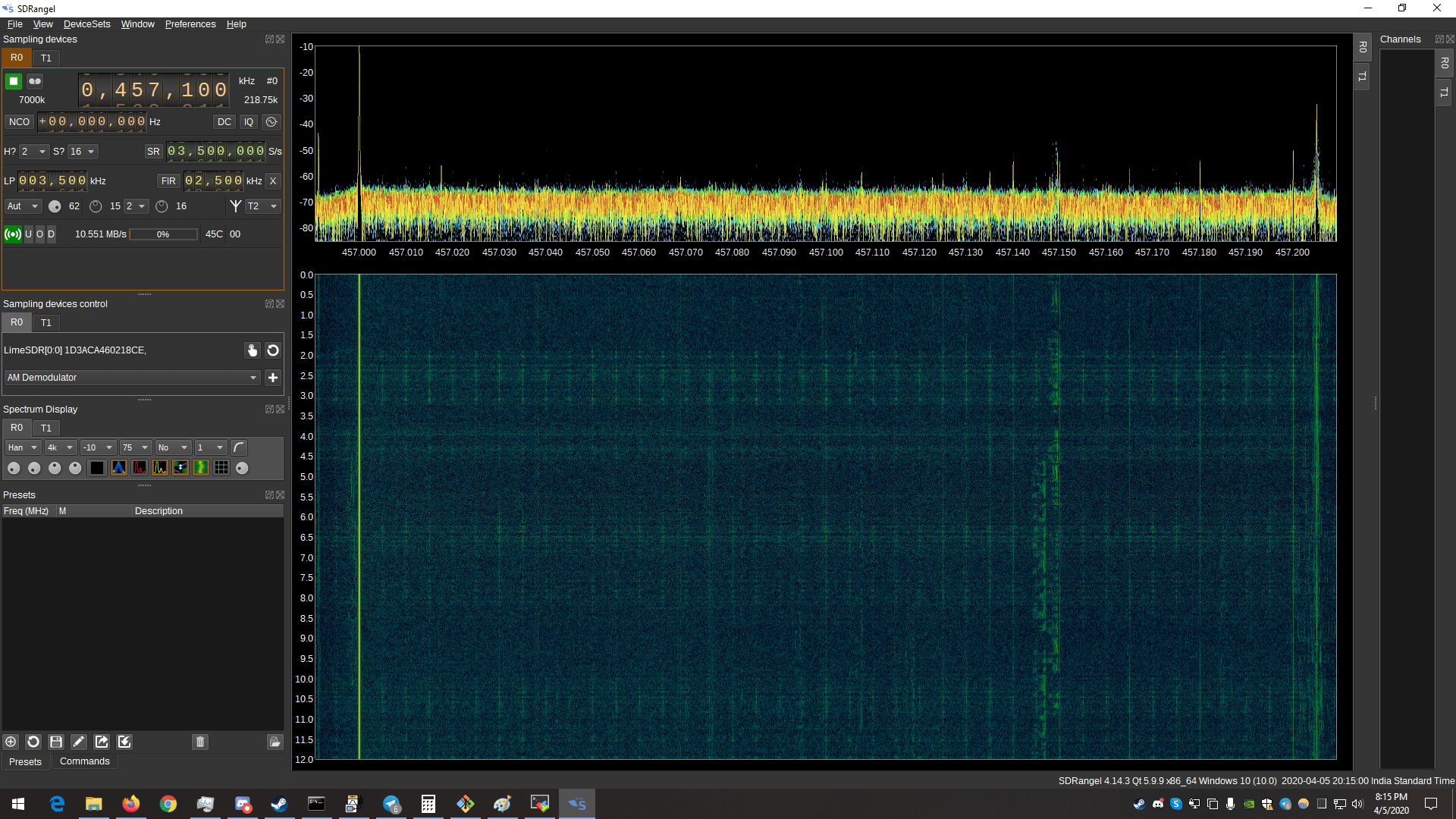
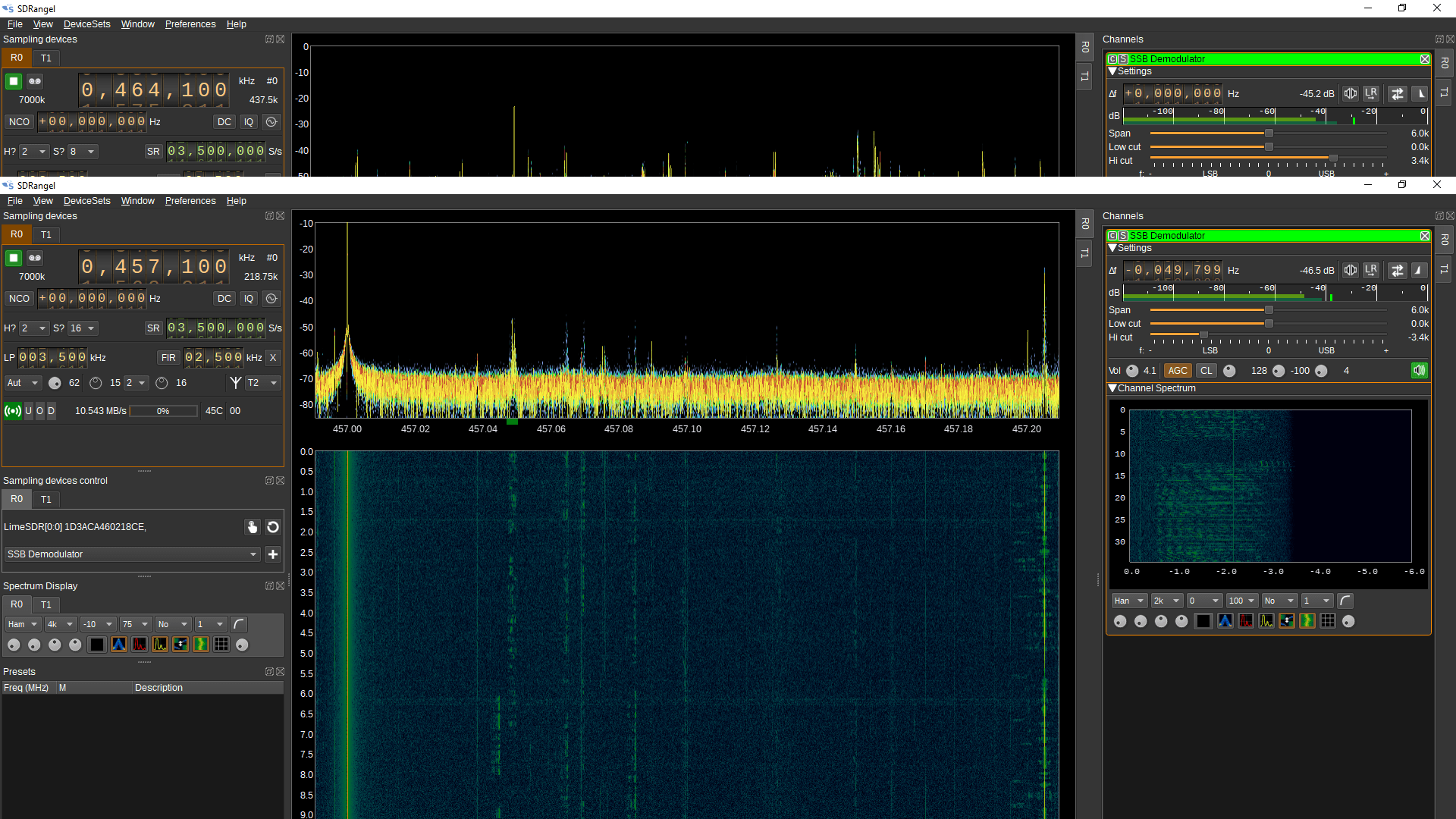

1 Response
[…] The full guide is available on Salil Tembe’s website, Nuclear Rambo. […]